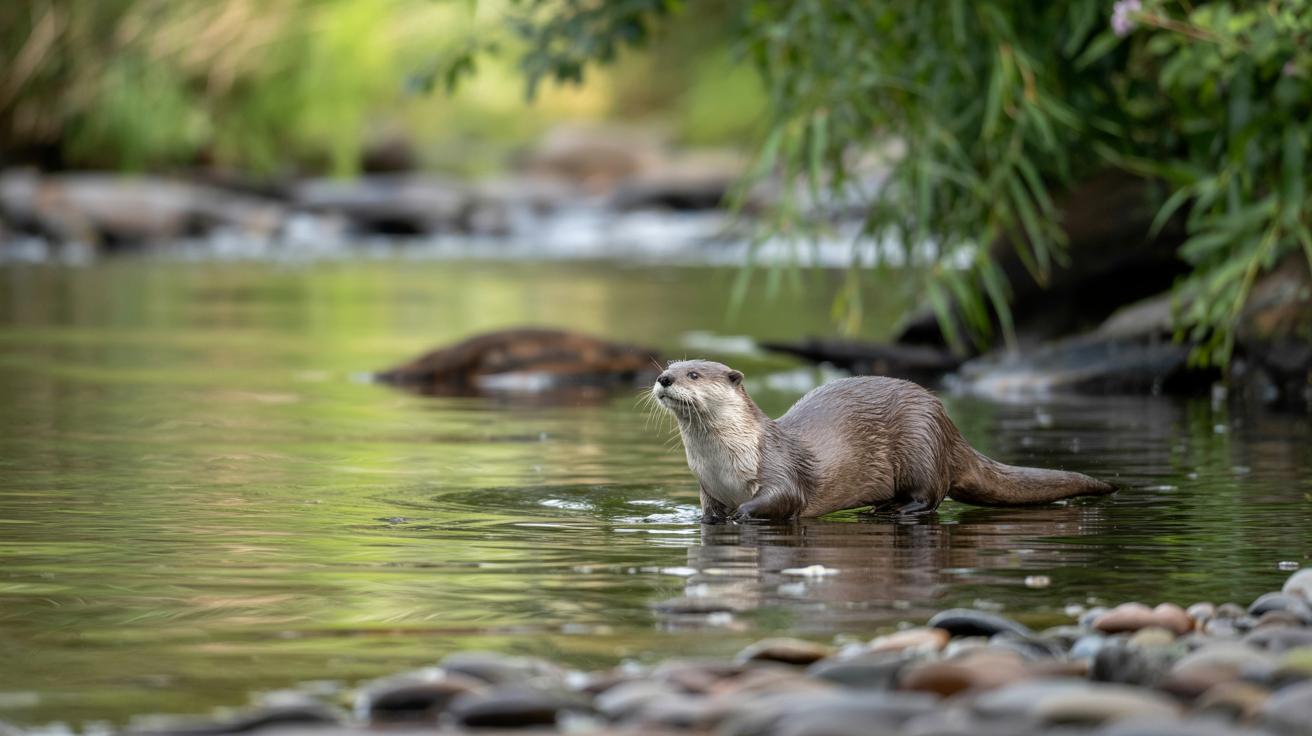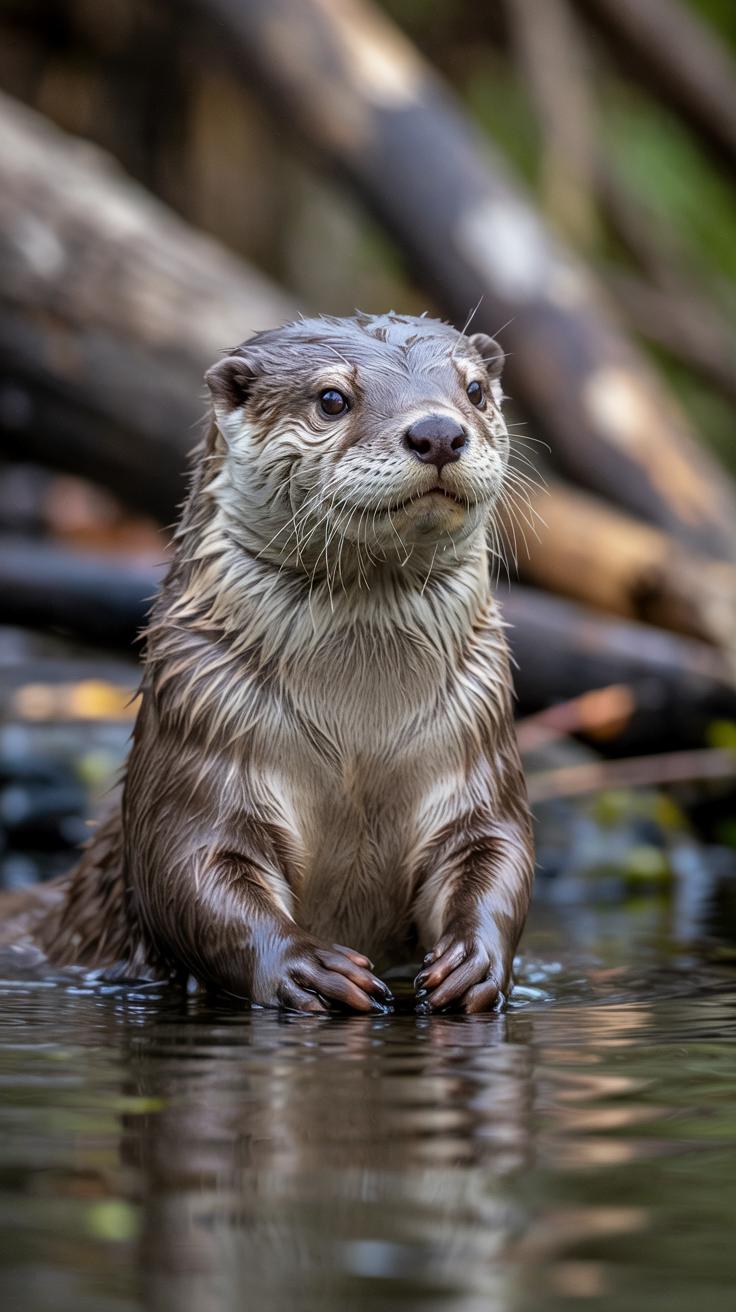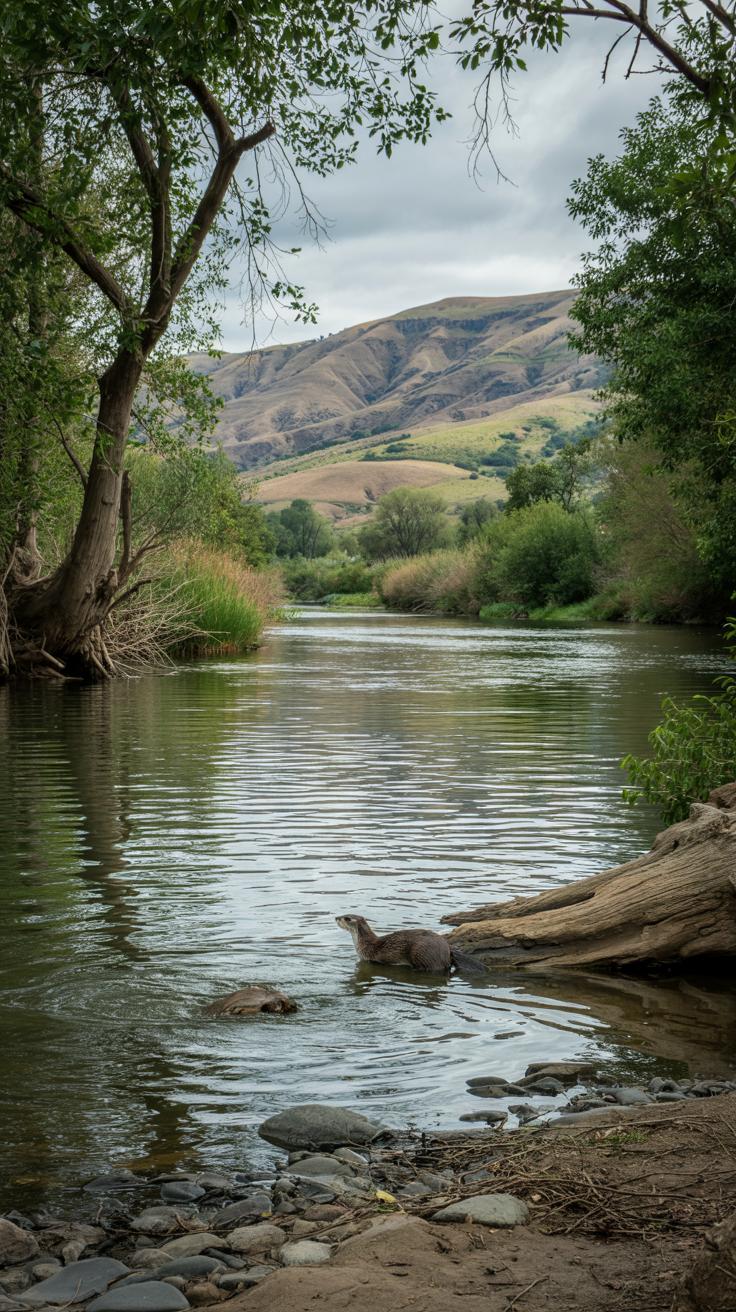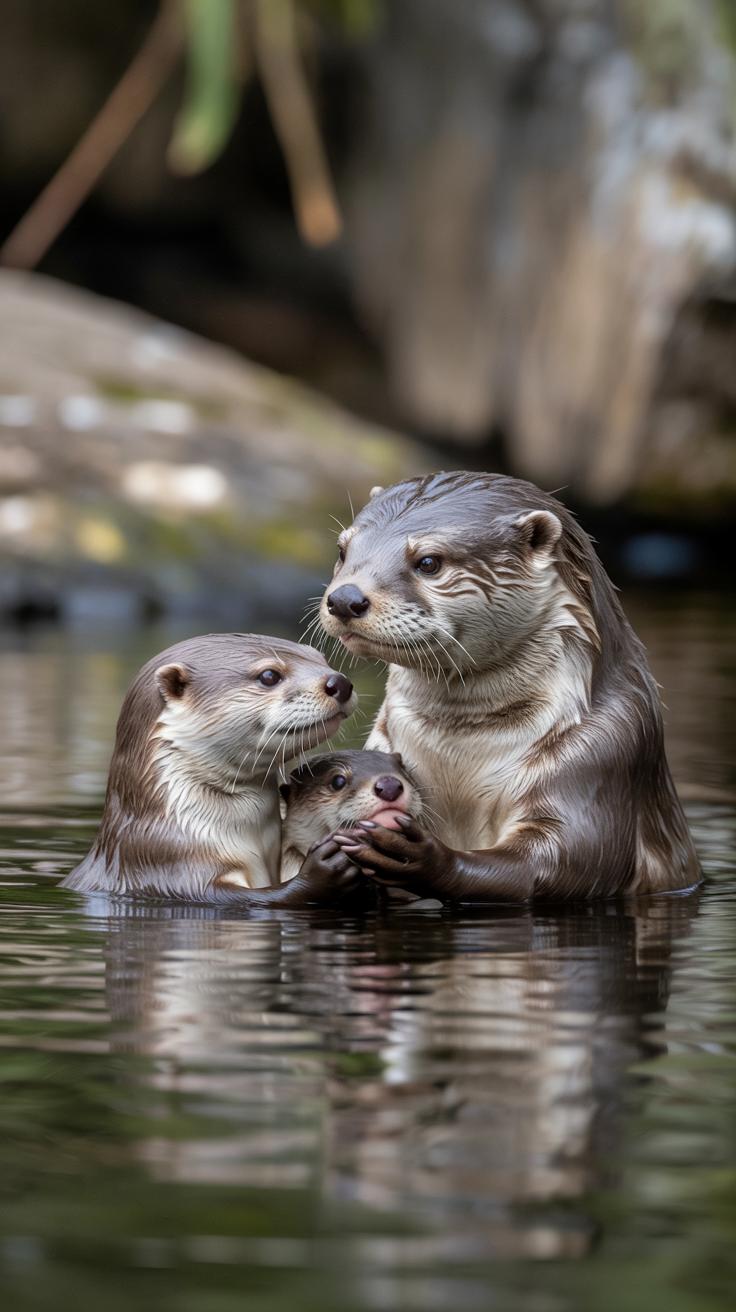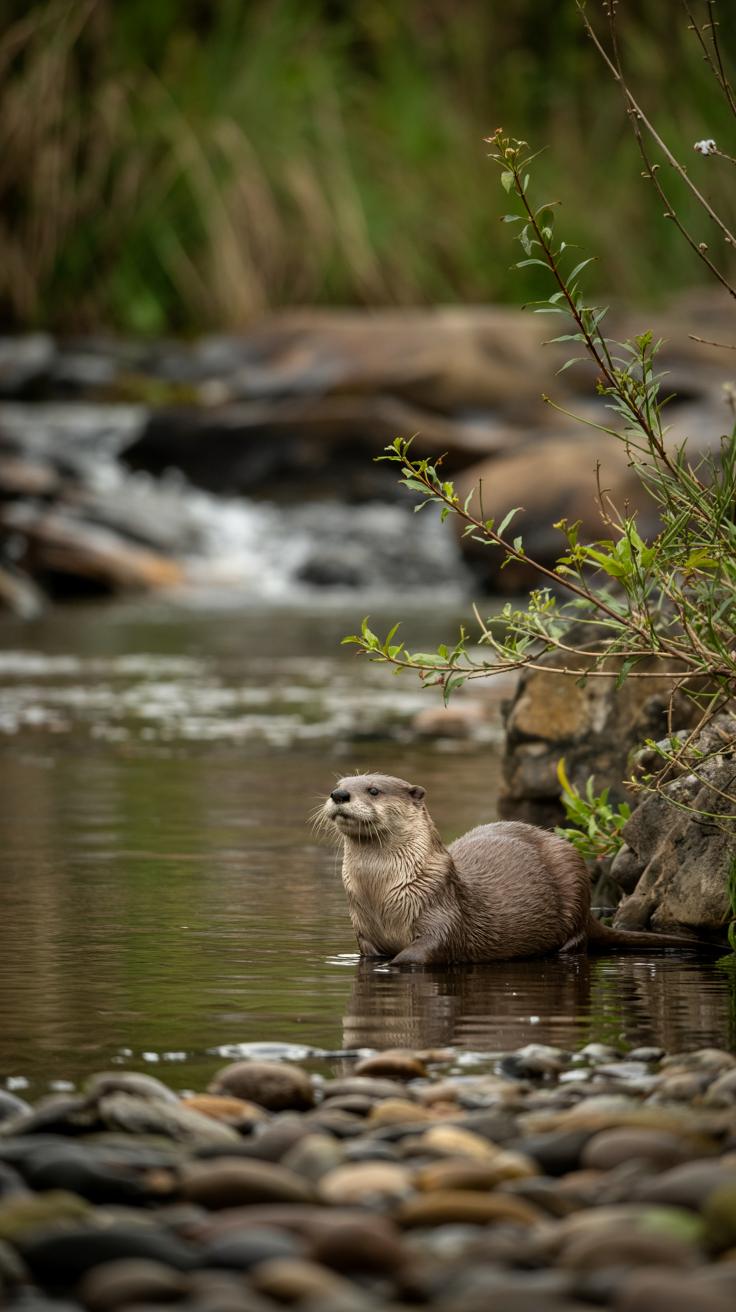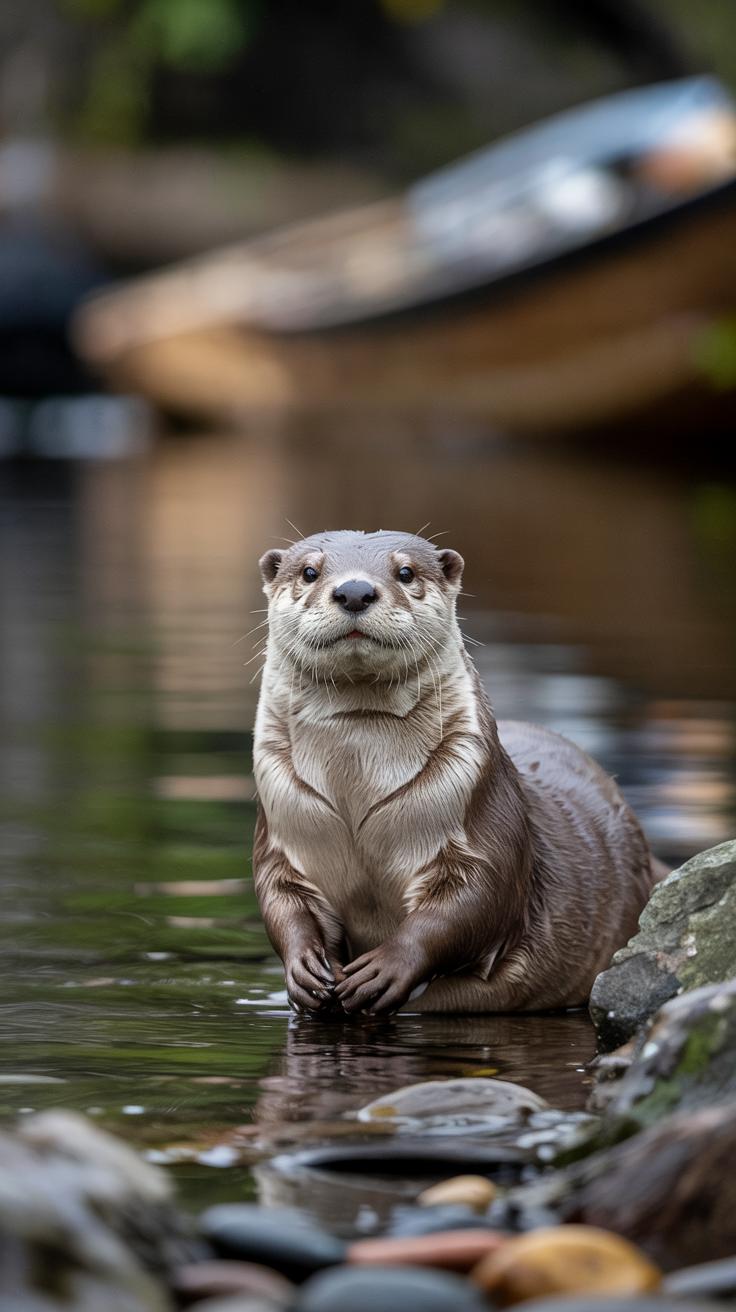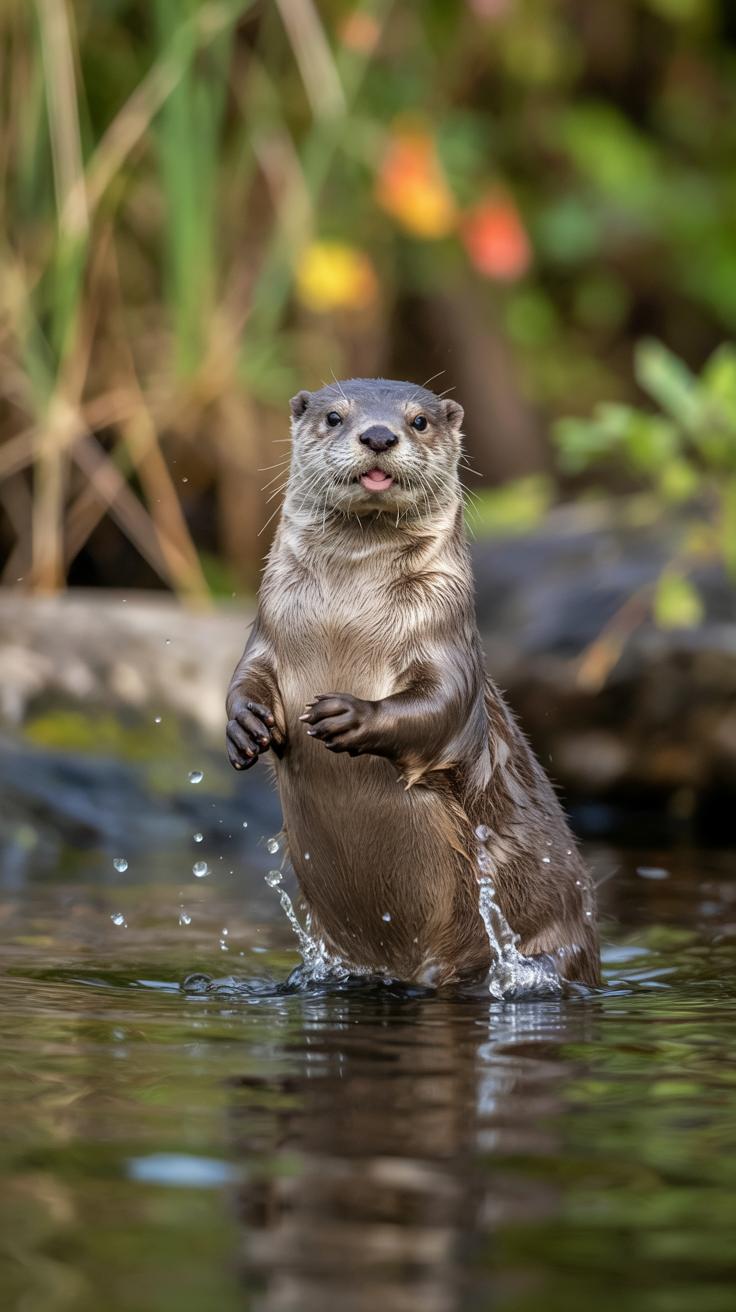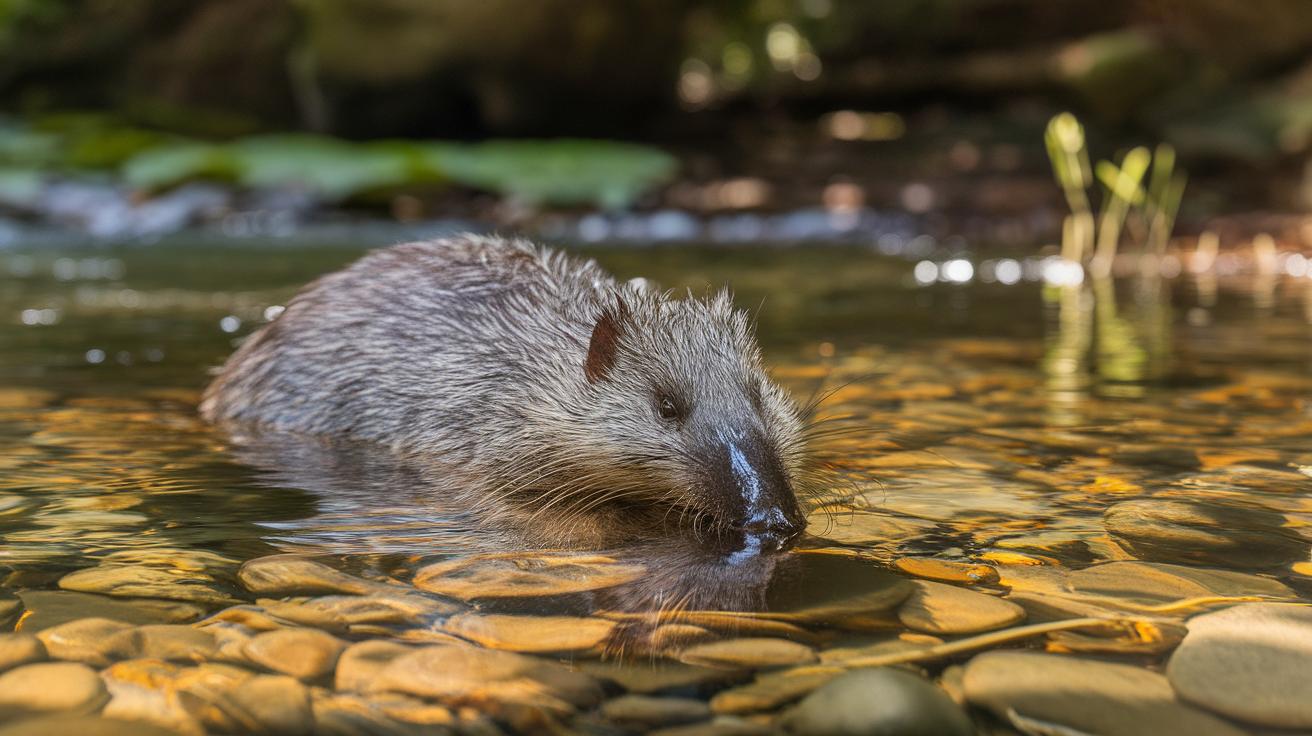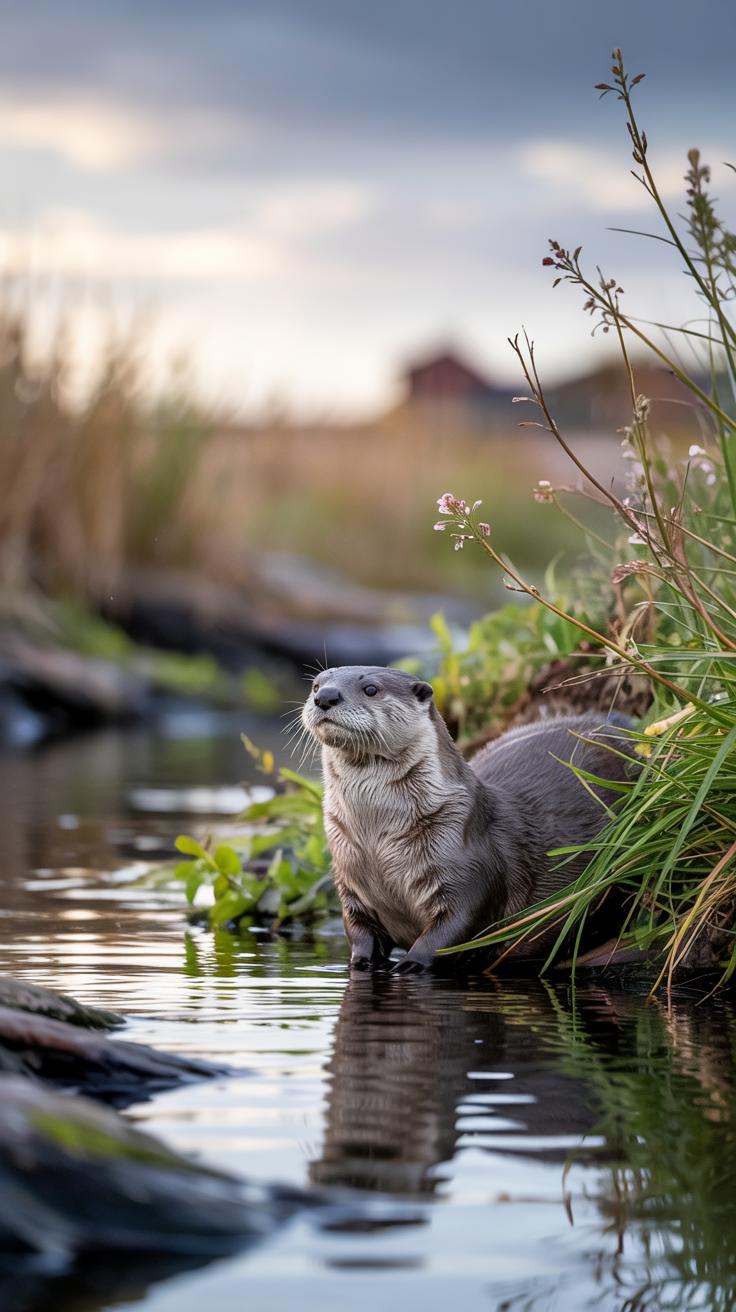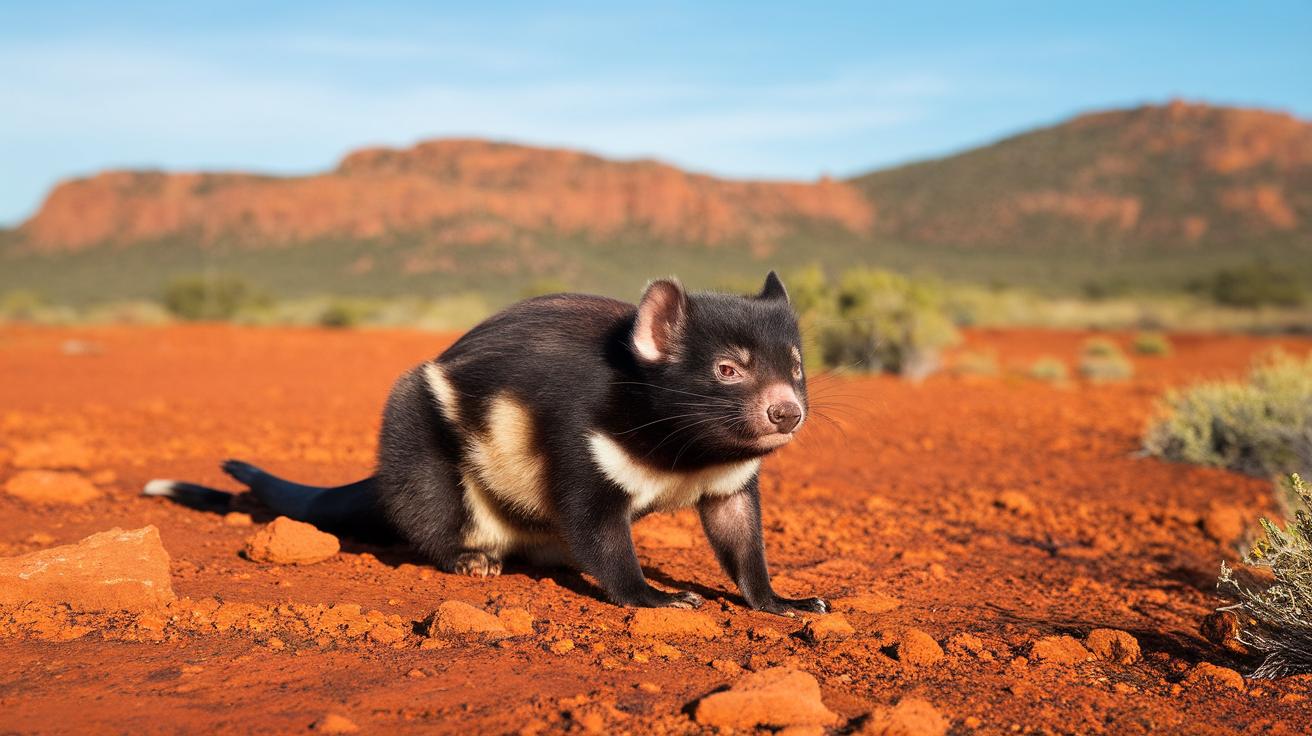Introduction
The North American river otter (Lontra canadensis) is a fascinating semiaquatic mammal thriving in diverse habitats across Canada and the United States. Known for their playful nature and strong swimming abilities, these creatures are not only vital to their ecosystems but also a source of joy for wildlife enthusiasts. River otters can weigh between 5.0 and 14 kg and are protected by a thick, water-repellent coat, allowing them to navigate both water and land with ease. Their burrowing behavior along the water’s edge showcases their adaptability, signifying their role in maintaining ecological balance.
This article delves into the various aspects of river otters, from their diet and reproduction to their conservation status. Understanding these elements will provide insights into the importance of protecting such amazing species and their aquatic habitats. Through detailed observations and accounts, readers will discover the playful antics and survival strategies of river otters, illustrating their critical place in the natural world.
Introduction to River Otters The North American River Otter and Its Scientific Classification
The North American river otter, scientifically known as Lutra canadensis, belongs to the Mustelidae family, which includes weasels, badgers, and ferrets. This fascinating creature showcases a streamlined body, short limbs, and a thick, water-resistant coat that enables it to thrive in aquatic environments. River otters typically weigh between 50 and 100 pounds, depending on their age and region, and can reach up to 4 feet in length. Their strong, webbed feet provide excellent swimming abilities, allowing them to maneuver gracefully through water.
These playful mammals prefer habitats that include freshwater rivers, lakes, and coastal marine environments that offer abundant food sources, such as fish, crustaceans, and amphibians. They often establish dens near water bodies, utilizing natural substrates like burrows or undercut banks. This adaptability and preference for diverse ecosystems contribute significantly to their thriving populations across North America.
Habitat and Distribution Ecosystems and Geographical Range of River Otters
The Diverse Ecosystems of River Otters
River otters thrive in various ecosystems, showcasing their remarkable adaptability. These playful creatures can be found in freshwater rivers, streams, lakes, and coastal areas. Preferred habitats typically feature abundant water sources and dense vegetative cover, providing essential shelter and ample opportunities for hunting. Wetlands are particularly favored, as they offer rich biodiversity that sustains the prey that river otters depend upon. The presence of clean, navigable waterways is critical for their survival, allowing them to engage in their acrobatic swimming and playful behavior, attributes that endear them to wildlife enthusiasts.
Geographical Range of River Otter Populations
The geographical distribution of river otters spans across North America, from the icy reaches of Canada to the warm bayous of the southern United States. They are widely dispersed, thriving in habitats that vary in climate and terrain. Specific populations can be found in the mountainous regions, wetlands of the Midwest, and along both the eastern and western coastlines. Their prevalence beyond urban areas highlights their resilience and adaptability in diverse environments. This distribution is crucial for understanding their role in various ecosystems and reinforces their significance within the natural food web.
Diet and Feeding Habits The Nutritional Preferences and Ecological Role of River Otters
Understanding the River Otter’s Diet
The river otter is an opportunistic carnivore, primarily consuming aquatic prey. Fish constitutes a major part of their diet, with species such as trout, salmon, and catfish being particularly favored. Their keen eyesight and agile swimming abilities allow them to catch slippery fish with remarkable efficiency. In addition to fish, river otters also hunt crustaceans, amphibians, and small mammals, showcasing a flexible dietary palate that varies depending on regional availability and seasonal changes.
Position in the Food Chain
This adaptability enables river otters to play a crucial role in their ecosystems. By preying on fish and other aquatic organisms, they help maintain healthy populations and contribute to the balance of marine life. As both predator and prey, river otters occupy an important niche within the food chain, ensuring ecological stability in their aquatic habitats. Their foraging behaviors can influence the distribution of fish populations, highlighting their significance not only as consumers but also as contributors to the biodiversity and health of their environments.
Reproduction and Lifespan The Mating Habits and Birthing Processes of River Otters
Unique Mating Rituals of River Otters
River otters exhibit fascinating reproductive behaviors characterized by elaborate mating rituals. The breeding season typically occurs in late winter to early spring. During this time, males engage in playful displays that include chasing, rolling, and water acrobatics. These energetic interactions not only strengthen bonds but also serve as courtship displays, allowing females to assess potential mates. Vocalizations, such as chirps and growls, further enhance communication during this critical phase.
The Birthing Process
Once mating is successful, a gestation period of about 60 to 64 days follows. Female river otters often seek secluded dens, such as abandoned burrows or secluded vegetation, to give birth. Typically, a litter consists of two to five kits. Unlike many mammals, the young remain dependent on their mothers for several months, staying in the den while she forages for food. This nurturing stage is critical for the survival of the kits, as the mother must balance feeding herself and her young. The combination of playful social interactions and robust parental care ensures the continuation of river otter populations in their aquatic habitats.
Conservation Status and Threats
Current Conservation Efforts
Initiatives aimed at protecting the North American river otter have gained momentum in recent years. Organizations focus on habitat preservation, which is critical given that otters thrive in clean, well-oxygenated water bodies. Conservation programs work on restoring wetlands and enforcing regulations against pollution and habitat destruction. Public education campaigns also play a vital role, increasing awareness about the ecological importance of river otters in their ecosystems. Collaboration with local communities promotes sustainable practices that ensure otters can flourish alongside human activities.
Threats to Survival
River otters face several threats that jeopardize their survival. Habitat loss due to urbanization, agriculture, and industrial development severely impacts their populations. Pollution in water bodies is another significant concern, leading to reduced prey availability and health risks. Hunting and trapping, although regulated, still pose dangers to otters, particularly in regions where they are seen as nuisances. Climate change adds another layer of uncertainty, affecting water quality and ecosystem dynamics that river otters depend on, highlighting the need for continued conservation efforts.
Interactions with Humans Evaluating River Otters Role in Human Environments
Conflict and Coexistence
River otters frequently find themselves interacting with human environments, leading to both conflicts and positive interactions. Their opportunistic feeding habits often lead them to suburban areas where fish farms and backyard ponds are present. Occasionally, their presence may result in property damage, as otters can consume valuable fish stocks, provoking frustration among local residents. In such instances, understanding their natural behaviors can foster better coexistence. Instead of viewing river otters solely as nuisances, embracing their role in local ecosystems promotes biodiversity and aids in aquatic health.
Awareness and Appreciation
Public awareness campaigns often highlight the enchanting and playful nature of river otters. Educational programs demonstrate their ecological importance, portraying them as indicators of water quality and ecosystem vitality. Interaction with otters in controlled environments, such as wildlife sanctuaries, allows communities to appreciate these creatures firsthand. Such encounters foster a greater connection between humans and wildlife, encouraging conservation efforts and promoting stewardship of aquatic habitats. Ultimately, building a harmonious relationship with river otters benefits both species, enhancing the environment and enriching the human experience.
Fun Facts about River Otters
Oddities and Characteristics
River otters possess fascinating traits that make them stand out in the animal kingdom. One of the most intriguing aspects of their behavior is their capacity for play, which often manifests in what are known as “otter romps.” These spirited activities involve sliding down muddy or snowy banks, chasing each other, and even tossing stones or sticks into the water. Their playful nature not only strengthens social bonds but also sharpens their hunting skills.
Another unique feature is their ability to close their ears and nostrils while swimming, allowing them to dive underwater with ease. This adaptation is critical as river otters can hold their breath for up to eight minutes while hunting for fish, amphibians, and crustaceans. Additionally, they possess a layer of thick fur that insulates against cold water, making these agile creatures well-adapted to diverse aquatic environments.
Social Structure and Communication
River otters are highly social animals, often forming groups known as rafts, which typically consist of a few adults and their young. Within these rafts, they communicate through a variety of vocalizations, including growls, whistles, and playful chirps. These sounds not only convey social status but also help in coordinating group movements, especially when hunting or escaping predators.
Interestingly, river otters engage in mutual grooming as a social bonding ritual. This behavior symbolizes trust and reinforces their group cohesion. With a combination of distinct calls and physical interactions, river otters create a complex social landscape that reflects their vibrant lifestyle within ecosystems where they thrive.
Ecological Importance The Role of River Otters in Biodiversity
Contributions to Aquatic Ecosystems
River otters play a critical role in maintaining the health of aquatic ecosystems, serving as both predators and prey within their habitats. By consuming fish and invertebrates, they help regulate these populations, ensuring a balanced ecosystem. This predatory behavior contributes to the control of species that may otherwise overpopulate, promoting biodiversity within freshwater systems. Their dynamic presence as top-level predators also influences the behavior of other aquatic animals, illustrating the interconnected nature of food webs.
Indicators of Environmental Health
As sensitive indicators of water quality, river otters reflect the overall condition of their environment. Healthy otter populations signal clean waterways and robust ecosystems, while their decline may indicate habitat degradation or pollution. This relationship underscores their importance not only in biodiversity but also as a barometer for ecological health, offering insights into environmental changes that affect other species. Monitoring river otter populations can reveal crucial trends, guiding conservation efforts aimed at preserving aquatic ecosystems.
Future of River Otters Navigating Environmental Challenges
Prospects in a Changing Ecosystem
The future of river otters is increasingly uncertain due to multiple environmental challenges. As water pollution continues to affect waterways, the food sources that otters rely on become contaminated, impacting their health and reproduction. Urbanization poses another threat, shrinking their habitats and isolating populations. Fragmentation disrupts migration patterns and limits genetic diversity, creating long-term population vulnerabilities.
Conservation Efforts and Community Involvement
Conservation strategies play a pivotal role in ensuring the survival of river otters. Establishing protected areas, enhancing wetland restoration, and implementing pollution control measures can create more favorable environments. Public awareness campaigns that emphasize the importance of otters can engage local communities in conservation efforts, fostering a collaborative approach to safeguard these playful mammals. If proactive steps are taken, the prospects for river otters may improve, helping to maintain the balance of aquatic ecosystems they are integral to.
Conclusions
The North American river otter is an exceptional species with unique adaptations that enable it to thrive in various environments. Their diet consists mainly of fish and other small aquatic creatures, illustrating their role as both predators and prey within their ecosystems. The richness of their habitat not only supports their existence but also offers countless benefits to other wildlife and natural processes in their regions.
The ongoing challenges faced by river otters, including habitat loss and environmental pollution, underline the need for concerted conservation efforts. By fostering awareness and supporting preservation initiatives, we can ensure that future generations continue to witness the remarkable romps and aquatic adventures of these enchanting mammals.

